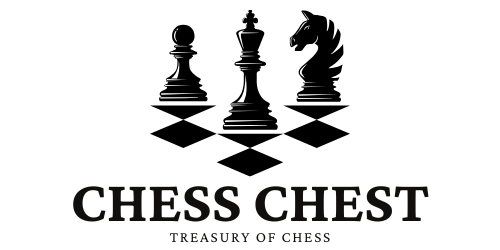Tracking your chess progress is essential for understanding your strengths, identifying areas for improvement, and setting realistic goals. Many online chess platforms provide detailed metrics that offer insights into your performance, making it easier to measure growth over time. In this article, we’ll explore the most useful online metrics for tracking chess progress and how to use them to improve your game.
1. Rating and Performance Scores
Most chess platforms assign players a rating based on their game results, usually calculated using the Elo or Glicko system. This rating provides a baseline for tracking your overall skill level.
- How It Helps: A steadily increasing rating indicates improvement, while plateaus or decreases suggest areas that may need more focus.
- Using It to Improve: Set rating goals based on your current level. Aim to gradually increase your rating by challenging yourself with stronger opponents or focusing on specific areas where you struggle.
2. Accuracy and Mistake Metrics
Many platforms, like Chess.com and Lichess, provide metrics on move accuracy, blunders, mistakes, and missed opportunities during games. These insights help players understand how often they make critical errors and how to prevent them.
- How It Helps: Tracking your mistake metrics shows where your gameplay needs the most improvement. For example, frequent blunders may indicate a need for more focus on tactics or endgame knowledge.
- Using It to Improve: Review games where you made mistakes and try to understand the reasoning behind each blunder. Identify patterns, such as moving too quickly or overlooking common tactical motifs, and focus on eliminating these tendencies.
3. Opening Performance and Move Analysis
Platforms like Chess.com and ChessBase provide detailed statistics on your performance with specific openings, showing win rates, average accuracy, and common pitfalls. Analyzing move-by-move accuracy also helps refine specific positions.
- How It Helps: Knowing which openings lead to success or difficulty allows you to focus your training on improving weaker openings or expanding your repertoire.
- Using It to Improve: If you notice that certain openings consistently result in poor outcomes, spend time studying these lines to understand their weaknesses. Use move analysis tools to learn optimal responses for common positions in these openings.
4. Endgame Performance
Many players struggle in endgames, and platforms now offer metrics specifically focused on endgame accuracy and success rates. Chess.com, for instance, tracks endgame blunders and accuracy to highlight areas for improvement.
- How It Helps: By understanding your endgame performance, you can focus on specific techniques, like pawn promotion or rook and pawn endings, to improve your chances of converting an advantage.
- Using It to Improve: Analyze games where you lost in the endgame, and practice those specific endgames using tools like Lichess’s Endgame Practice or ChessBase’s endgame databases. This focused approach helps strengthen your skills in key endgame scenarios.
5. Tactical Puzzle Ratings and Accuracy
Puzzle ratings and accuracy rates reflect your tactical skill, as these metrics measure how well you solve puzzles or recognize patterns in real games. Platforms like Chess.com and Lichess assign players a puzzle rating based on the difficulty of puzzles completed successfully.
- How It Helps: A higher puzzle rating suggests improved tactical vision and pattern recognition, which can positively impact in-game performance.
- Using It to Improve: Regularly solve puzzles on tactics trainers and track your puzzle rating. If your rating plateaus or decreases, consider working on puzzles of different themes, such as pins, forks, or skewers, to improve pattern recognition and adaptability.
6. Time Management and Average Move Time
Some chess platforms track average move time and time-related mistakes, helping players assess their time management skills during games. Poor time management often leads to rushed moves and avoidable errors.
- How It Helps: Understanding how much time you spend on moves helps identify areas where you may need to think faster or slower. For instance, if you’re spending too long in the opening but rushing the endgame, it may indicate an imbalance in time management.
- Using It to Improve: Set goals to optimize time spent on each phase of the game. Practice playing shorter games to improve quick decision-making, or set limits for each phase (e.g., a maximum of 5 minutes for the opening) to develop balanced time usage.
Summary
Tracking your chess progress through online metrics provides a clear roadmap for improvement. By regularly monitoring your rating, accuracy, opening and endgame performance, tactical skill, and time management, you can gain valuable insights into your playing style and growth areas. Use these metrics to set specific, achievable goals and adjust your training routine accordingly. With a focused approach to tracking and improvement, you’ll be well-equipped to reach new levels of skill and success in chess.




